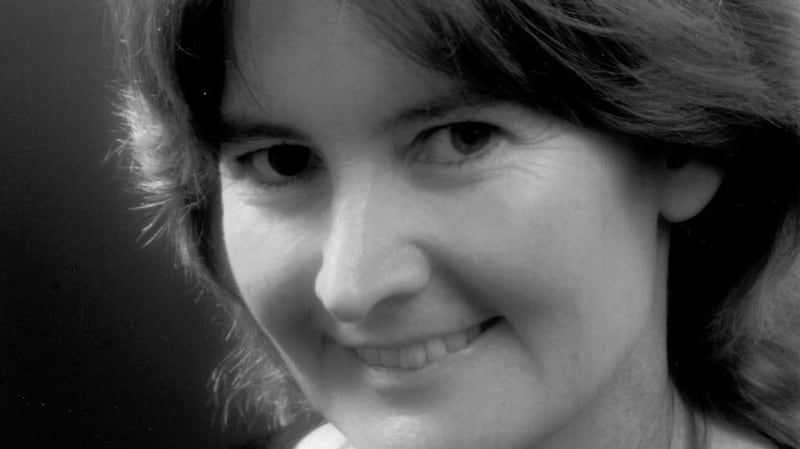Creation and inheritance are at the heart of Nessa O'Mahony's The Hollow Woman on the Island (Salmon, €12). Although O'Mahony's style generally aspires to plainspokenness, the book includes a pattern poem or calligram, Simple Arithmetic of the Human Egg, which takes the shape of an egg and counts down from human generations, "Born/with two/ million but the/ maths are insane," to the different matter of artistic creation, "pebbles washed up,/ edge wavepolished/ into Henry/ Moore."
The central, title sequence recounts the experience of ovarian cancer – “The soon to be hollow woman waits/ in a room with four doors, all closed”, documenting recognisable scenes (“She looks at the piles of glossies/ from two years ago and picks one up;/old news is better/ than new news”) but still protectively noticing the outside world, “two parent wrens / cordoning a fledge / as it careered / from hedge to vine / and back again, / settling on the slant / of the garden shed.”
O’Mahony’s strongest poems are those in which her confident grasp on family and inheritance are placed in relation to an object and image (like that “wavepolished pebble”) which sets her world in relation to something else, a new idea or frame of reference. The book remember neighbours, a watchful “Mrs Pass If You Can”, and north Cork relatives, while a memorable elegy, The Hare on the Chest, makes “the zigzag chase of a breathless hare” become its subject’s resting place. The book’s more occasional poems lack such specific images and forceful metaphors as they recount debates about Stem, or encounters with Joyce, poetry at UCD or Mary Wollstonecraft.

In her fifth collection, Daughters of the House (Dedalus, €12.50), Catherine Phil MacCarthy exhibits a similar interest in grounding her poems in an understanding of family and inheritance, which she chooses in this book to view through the prism of Irish links to Paris.
This was also the subject of Matthew Sweeney’s last book, King of a Rainy Country, which took Baudelaire as its formal example for ingenious prose poems. MacCarthy relates her pictures of Paris, not to any particular French mode or poet ( her style, like O’Mahony’s is plain and clear, though with some more musical forms), but to historical figures with connections there. The artist Sarah Purser is central, especially via her portraits of political figures like Michael Davitt and Maud Gonne, who are themselves each the subjects of poems. Purser becomes a kind of proto-Virginia Woolf, looking only for what she can find in Paris, “the means to work”. (Paris Diary). The occluded history the book recounts remakes Gonne in particular as a hero, who “by her cell window in Kilmainham / prays for the young life taken / by gunshot”. (Digital Archive)
The book’s final third returns to the contemporary, with scenes of Dublin Bay, a comic take on a women-only bathing spot in London, a strikingly surreal poem called The Hat (“The hat often wished it were a bird, / as did the woman, islanded by fields / with no one to talk to but herself.”) and a couple of memorable family vignettes, Prodigal, which describes her mother’s death and wonders “if she knew she was dying” and I Want to Hold Your Hand whose Beatles homage is powered by lightly handled end-rhymes.

In The End of the World (Dedalus, €12.50), Patrick Deeley returns to familiar territory, familiar not just because he has written about its figures and scenes before, as collected in his Groundswell: Selected Poems (2013), but also because he is working in what might broadly be called the generational lyric which came to prominence around mid-century in the work of Patrick Kavanagh and, moreso, Seamus Heaney, Thomas Kinsella and Tony Harrison. Those poets created durable forms for describing the tense and dramatically gripping losses as third-level education and a changing economy unsettled families and communities, creating opportunities but also gaps and losses for a generation. If the first writers of such poems, mostly young men and women, were antagonistic or complicating in their attitude to the world they came from, that feeling is replaced in recent decades by a more generous and nostalgic representation of predecessors.
Consciously or not, Deeley’s poems in this mode consistently run up against lines and images which will remind readers of key Heaney poems. When he writes about a “boat on top of a tree”, the annals and Clonmacnoise seem part of the picture too as it sits “on a rig of branches breasting the ocean of the air.” (The Boat). We recognise the set-up when Undercut compares the father’s axe’s “raggy beak / resembling the nib of a huge, badly pared pencil”, before philosophising on “poems as a means of retrieval, // though they seemed only the ghosts / of all that was won and lost in that suddenly cleared / space.”
Deeley situates the present as a kind of homelessness, a place for remembering, with the poet himself as a hinge or co-ordinating point between different kinds of past life and our own contemporary moment. Skilful storyteller and master of the steady line that he is, these poems sustain our attention, but it is in the detailed, wondering and occasionally horrified descriptions of plant and animal life that Deeley’s new poems are most powerful. Here he is describing a toad, “Snibs of rock, / effervesces of air trapped in ancient ice […]crouched / under tarpaulin of leathery wing-webbing, / or juddering its head as it swallows a smaller animal”, and here is a bog body (another echo!) in Torso: “made of frog skin, darker than harvest frog, the span / of his arms imaginable in perches, his fists / clutching heather, squeeging glops of sphagnum as he sits / propped, the head gone missing”.





















